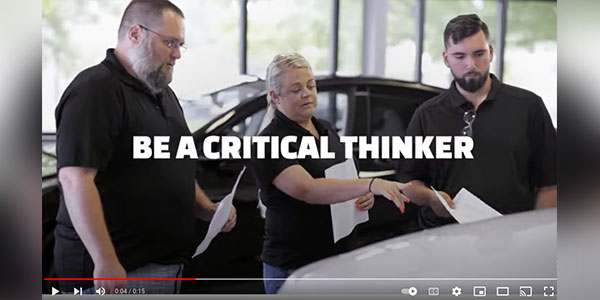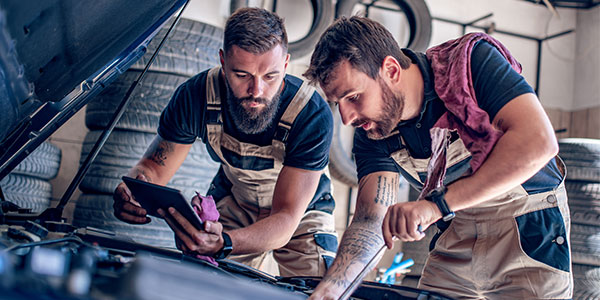By Kaylee Felio
Most auto dealers find that their service and parts departments generate almost 50% of their profits, according to the National Automobile Dealers Association. Customer Pay Repair Order Sales, Counter Ticket Customer Retail Sales, Mechanical Shop Sales and Body Shop/Collision Sales are the main profit generators.
Yet many auto dealers treat their parts departments as afterthoughts. The automotive business is incredibly challenging today and dealers are stretched thin due to an array of factors, including:
- The 9.3 million job openings in the U.S. at the end of April 2021, as reported by the U.S. Bureau of Statistics. The ongoing COVID pandemic, an aging workforce and a scarcity of those entering the automotive industry are among the drivers. According to a Staffing Study by Cox Automotive Dealership, the result is that 72% of franchised U.S. auto dealer respondents reported challenges finding and hiring suitable employees.
- Shortages of metal and other raw materials result in the absence of many parts. What were sometimes days-long delays are now weeks-long, according to Bloomberg News.
- The global shipping clog that keeps needed supplies on ships in seaports is another factor in the shortage, adds Bloomberg.
Before you decide that loss of parts revenue is a given, consider your pricing strategy. Have you ever noticed that grocery stores constantly release advertisements, many of which state something such as “Sale today only 50% off”? How often do you and other auto dealers similarly review pricing strategies? Our guess is the answer is rarely or never.
How Dealers Can Analyze Pricing Strategy Shortfalls
To maximize profits, you and other dealers need to closely look at their past sales and analyze the best pricing strategy system for the months ahead. We call this a four-step plan: Evaluate, Investigate, Implement and Review.
The flat base price traditionally used doesn’t work in this economic climate. Instead, you must analyze your profit margins before you develop a pricing strategy.
For the most accurate view of your profit performance, though, we suggest you follow these steps :
- Pull a parts report from your inventory. Then just review the parts numbers, costs and list prices.
- Create a spreadsheet. In one column, subtract the cost from the list price. In the second column, list the gross profit margin.
- Sort the spreadsheet, so you have three categories:
1. Parts with a gross profit under 40%,
2. Parts with a gross profit at or near 40% and
3. Parts with a gross profit over 40%.
When you look at the analysis, consider each cost as an “escalator group.” Each category has a different cost, of course, and in an ideal scenario, you would have a minimum 40% profit for each group.
To determine the profit percentage of each “escalator group,” do the following:
- Multiply the cost or list field by your escalated percentage.
- Subtract the escalated retail price from the cost.
- Divide the difference into the escalated retail price. That will determine the percentage.
Follow this system to determine the amount of profit you earn from the various parts when using the escalator category. For example, cost plus 100 should yield a 50% profit.
The Downside to Manual Pricing Strategy Analysis
One stumbling block some dealers and other auto parts suppliers find is that they don’t use the actual sales numbers. It’s tempting to make excuses, especially for lagging sales, and instead use “what if” numbers. That will not help you determine the pricing strategy you need to institute to realize your expected profit numbers.
Remember, one of the cardinal rules during this type of evaluation is to use the actual not “what if” numbers. When you use the system with real sales numbers, you will see how much money you have left behind.
The goal is to determine what areas drag down your gross, review those areas and plan to correct deficiencies. Some actions to take include:
- Check price codes and levels
- Determine if price codes are labor driven
- Analyze if there are source accounting issues
- Check if these are grid-priced parts or from parts menus
- Determine who, if anyone, overrides the sales prices of items
Once you have done this analysis and gathered the data, you can work toward boosting your profit. Steps include increasing the price of menu-priced items, isolating low gross parts in each source and track profit, creating a sub-sale account for items in which the price is locked in, working to eliminate overrides and, finally, adjusting the elevator table.
The Key to Efficient Analysis
The problem, of course, is this continued analysis takes a lot of time. And with the staffing shortages you face, instituting this might seem impossible even though not doing so leaves money on the table.
That’s why so many dealers and retail/whole parts sellers rely on inventory partners to help analyze parts and pricing daily. It can save your parts professionals a minimum of four to six hours and may win you 50% higher ROI, a 20% increase in sales parts, 15% less idle parts and 20% less total inventory.
In these stressful times for the automotive world, you owe it to yourself to analyze your parts strategy for continued success.
Kaylee Felio is the sales and marketing manager at PartsEdge and can be reached at [email protected].














